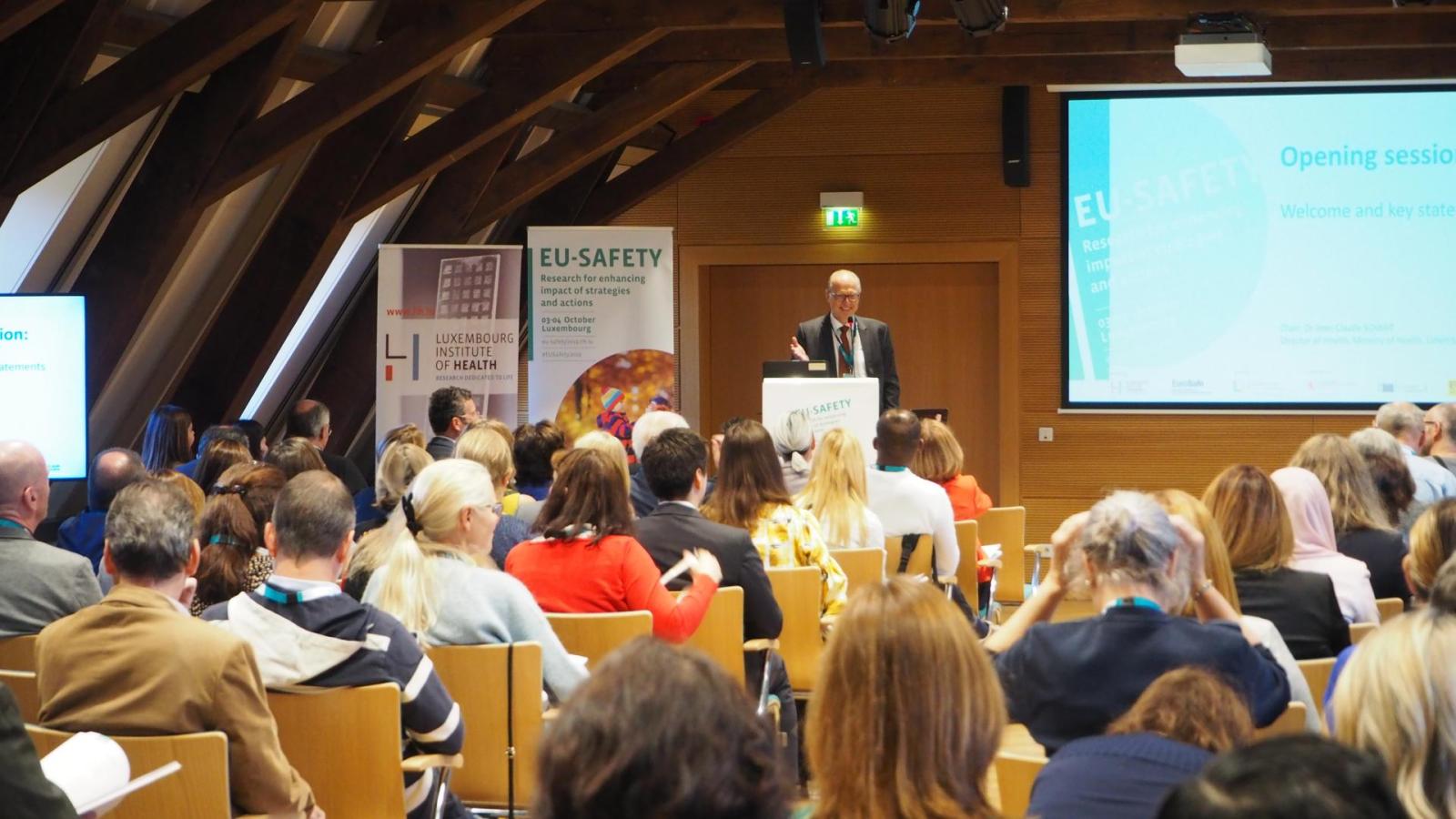Conclusions: EU-Safety 2019 Conference, Luxembourg, 3-4 October 2019

Almost two hundred delegates from more than 40 countries took part in the eighth European Conference on Injury Prevention and Safety Promotion. The conference included 93 excellent presentations from a superb range of speakers, drawn from the worlds of government, academe, healthcare, risk management and accident prevention. There were plenty of opportunities for networking and the slides will be freely available via the EuroSafe website.
Throughout the conference, presentations showcased the balance of environmental and behavioural factors in both causing and preventing accidental injuries. There are many examples of environmental factors (such as engineering solutions and legislation – such as car safety belts) which have saved countless lives. Behavioural factors (such as risk taking, peer group pressure, distraction, and rule-breaking) are much more difficult to address and require sustained, long-term investment in awareness-raising campaigns and educational programmes.
Speakers emphasised that the reduction of the overall burden of injury first requires the implementation of injury surveillance systems, which should collect and combine both information on injuries and exposure to risk from different data sources: “If you cannot measure it, you cannot improve it.” For instance, various studies in Europe indicate that not enough is being done to prevent or to monitor the risks of injuries or incidents linked to consumer products. Tailored data-collection and monitoring on injuries and the products involved is essential for understanding the risks and developing protection strategies. This includes the identification of specific hazardous consumer products and the differences in product involvement in accidents across countries.
Delegates agreed that data is crucial for understanding injury trends, setting priorities for accident prevention and measuring the effectiveness of accident prevention programmes. Resources must be found to maintain – and ideally – expand the EU IDB! Faced with increasing pressure on public finances, injury data is increasingly important for justifying ongoing investment in accident prevention.
Without effective accident prevention, the current rising trend in accidents and injuries will continue and this, coupled with an ageing population, could lead to healthcare systems rapidly becoming overwhelmed.
According to the findings of a European wide public health study, models of good practice in injury prevention are often led by civil society actors, e.g. by professional associations like paediatricians, hospitals, charities and advocacy groups. Nevertheless, there should be a long-standing partnership between civil sector and public policy to build up a stronger capacity in injury prevention. Deficits in the political commitment can be seen across Europe where some countries lack of a comprehensive national safety action plan.
Speakers and conference participants called for:
- National governments to give a proper follow up of the European Council Recommendation of 2007 and to report on progress made (with regards to the prevention of injury, promotion of safety and collection of injury causation data) and lessons learnt over the past years, and to support continued exchange and collaboration between countries;
- EuroStat and Member States to reach a binding agreement for the sharing of core information on injuries treated in accident and emergency departments in hospitals across the EU including core information as defined in the IDB-Minimum Dataset;
- The European Commission to support continued exchange of good practices among experts across Europe, in priority areas such as child safety, safety of older people, persons with disabilities, vulnerable road users, and to sports and leisure injuries, injuries caused by products and services, violence and self-harm;
- For NGOs, both represented by conference delegates and those who were unable to attend, injury prevention experts and researchers to organise themselves stronger for a more integrated multi-sectoral approach towards injury prevention and research.
The conference recognised the vital role of delegates’ organisations in influencing their national Government officials and politicians and participating in EuroSafe’s activities.
Abstract book and presentations can be accessed at:
https://sites.lih.lu/eu-safety-2019/media/
